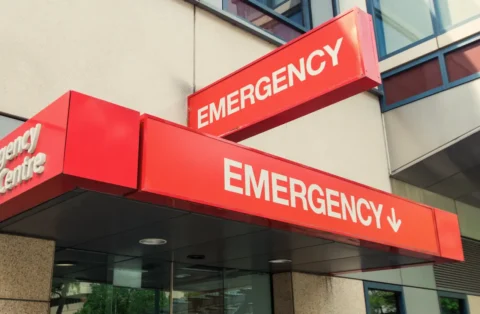What you’ll learn
You’ll get a clear picture of what Suboxone withdrawal can feel like, when symptoms may show up, and how long they might last. We’ll walk through the phases, the factors that affect how long symptoms can last, and, most importantly, safe ways to manage withdrawal with medical support.
Suboxone® has helped many people take back control from opioid addiction. For many, it’s a lifeline that reduces cravings and creates stability. But like any treatment, it can bring its own challenges, including the potential for withdrawal symptoms if you stop use, especially when stopping too quickly.
If you’re taking Suboxone as part of your recovery program, it’s important to speak with your provider if you’re thinking about stopping the medication. Stopping Suboxone suddenly can trigger symptoms that can lead to relapse.
No two people are alike on their road to recovery. While different people may have their own reasons for wanting to discontinue use, in many cases, it’s safer to be on Suboxone than not. Your provider is there to help you make the right choice for you and prepare you for any next steps, whatever they may be.
If you’re wondering, “How long does Suboxone withdrawal last?” you’re not alone.
This article will guide you through what to expect during withdrawal, how long it typically lasts, and how to manage symptoms effectively.
What is Suboxone withdrawal?
Suboxone contains two ingredients: buprenorphine, a partial opioid agonist, and naloxone, an opioid antagonist.
When you stop taking Suboxone, your body notices the change. This is because your body has become used to the medication’s presence, and when it’s removed, it takes time to adjust. Your body has to relearn how to function without the steady support that Suboxone provides. That adjustment is what causes withdrawal symptoms.
When Suboxone is used as part of a Medication-Assisted Treatment (MAT) program, it helps stabilize the body’s opioid levels. Stopping the medication too quickly can boot your body back to having to readjust, leading to withdrawal symptoms. When this occurs, it’s simply your brain and body’s way of relearning to function without the medication, especially if you stop using it abruptly.
How long does Suboxone withdrawal last?
Withdrawal looks different for everyone. What you experience during withdrawal can significantly vary from what someone else does because it’s influenced by several factors, including how long you’ve been taking Suboxone, your dosage, and your overall health.
However, most people experience a withdrawal timeline that looks something like this:
1. Early withdrawal (first 24-72 hours)
- Symptoms: Anxiety, restlessness, sweating, and mild physical discomfort.
- What’s happening: This aspect of withdrawal begins about 24-36 hours after your last dose. Since Suboxone has a long half-life of 24-42 hours (the time it takes for half of the medication to leave your system), withdrawal symptoms start more slowly compared to other opioids.
2. Peak withdrawal (days 3-7)
- Symptoms: Muscle aches, insomnia, nausea, diarrhea, and intense cravings.
- What’s happening: This is typically the most challenging stage of withdrawal. Symptoms peak during this period, making it the hardest to endure. The intensity varies from person to person but can be managed with proper support and treatment.
3. Late withdrawal (days 8-14)
- Symptoms: Continued insomnia, mood swings, fatigue, and cravings, though less intense.
- What’s happening: Your body is adjusting, but it’s still working hard to find balance. Symptoms begin to lessen, but you might still feel fatigued and have trouble sleeping. Emotional symptoms, such as anxiety or depression, may continue during this phase.
4. Post-acute withdrawal syndrome (PAWS) (weeks to months)
- Symptoms: Emotional challenges, difficulty concentrating, occasional cravings.
- What’s happening: For some people, mild symptoms can linger for weeks or even months after stopping Suboxone. This is known as Post-Acute Withdrawal Syndrome (PAWS). These symptoms are generally more psychological than physical and can include mood swings, anxiety, and occasional cravings. These symptoms usually ease over time, especially with ongoing support.
Here’s a general picture of when withdrawal symptoms may show up and how they might feel. Everyone’s experience is unique. Your symptoms may come earlier, later, or not at all. Use this as a guide, not a rule, and remember support is available at every stage:
| Time Period | Symptoms |
| 24-72 hours | • Anxiety • Jitters • Sweats • Mild physical discomfort |
| 3-7 days | • Body aches • Insomnia • Nausea • Diarrhea • Intense cravings |
| 8-14 days | • Insomnia • Mood swings • Exhaustion • Less intense cravings |
| 2 weeks to several months | • Depression • Mood swings • Fatigue • Difficulty staying focusedPeriodic cravings |
Factors that affect withdrawal duration
Not everyone will experience withdrawal in the same way. Several factors can influence how long Suboxone withdrawal lasts:
- How long you’ve taken Suboxone: The longer you’ve been taking Suboxone, the more time your body may need to adjust during withdrawal.
- Your dose: Higher doses of Suboxone can lead to longer withdrawal symptoms.
- Your health and body: Each person’s body responds differently to withdrawal. Factors like metabolism, overall health, and genetics play a role.
- Whether you taper off: Gradually reducing your Suboxone dose under medical supervision can significantly ease withdrawal symptoms and shorten the duration.
How to manage Suboxone withdrawal symptoms
You don’t have to push through withdrawal alone. Here are ways to make it safer and more manageable:
1. Tapering
- What it is: Gradually reducing your dosage under the guidance of a healthcare provider.
- Why it helps: Tapering allows your body to slowly adjust to lower levels of Suboxone, making withdrawal symptoms much easier to handle.
2. Supportive care
- What it is: This includes staying hydrated, eating nutritious foods, and getting plenty of rest.
- Why it helps: Your body needs extra care during withdrawal. Proper nutrition and hydration can help alleviate symptoms like fatigue and nausea. A diet rich in fruits, veggies, lean proteins, and “good fats” (like olive oil or avocados) helps stabilize your energy levels. Try to avoid sugary snacks that can spike your blood sugar levels.
3. Medications
- What it is: Certain medications can help manage specific withdrawal symptoms, such as anti-nausea drugs or sleep aids.
- Why it helps: These medications can make the withdrawal process more comfortable and less disruptive to your daily life.
4. Counseling and support groups
- What it is: Professional counseling or joining a support group.
- Why it helps: Emotional support is crucial during withdrawal. Talking to a counselor or others who’ve been through similar experiences can provide comfort and encouragement.
5. Healthy lifestyle adjustments
- What it is: Self-care in the form of prioritizing good sleep habits, eating balanced meals at regular times, and drinking plenty of water.
- Why it helps: Building healthy routines is a small, steady step that can ease discomfort and take your mind off withdrawal symptoms, and create good habits throughout your recovery. Carving out regular time for meals and staying hydrated throughout the day can help your energy levels, as well as reduce headaches and fatigue. Getting to bed at a set time every night can also help create consistency and comfort during this period. While insomnia symptoms can be common, creating a relaxing environment and avoiding screen time before bed can help you get better, more restful sleep.
When to seek professional help
Quitting suddenly can make withdrawal harder and raise the risk of relapse.
You don’t need to figure this out by yourself. Our licensed providers are here to help you decide what’s right for you, and to guide you step by step so you feel supported the whole way.
Suboxone withdrawal is temporary, and we’re here to help
Suboxone withdrawal can be tough, but it doesn’t last forever. With the right plan and support, symptoms can be managed, and you can stay on track with your recovery.
Frequently asked questions about Suboxone treatment
How to avoid precipitated withdrawal from Suboxone?
Every person reacts differently. Precipitated withdrawal begins when you first start to take Suboxone.. Precipitated withdrawal can feel sudden and intense, like your body is being thrown into withdrawal all at once. It usually happens when Suboxone is taken too soon after another opioid, which displaces the opioid in your system before your body is ready. To avoid this, it’s important to wait until you’re already experiencing mild to moderate withdrawal symptoms before taking your first dose. This timing can vary based on the type of opioid used. However, withdrawal can also happen when you stop using Suboxone too soon. Gradually tapering off your medication can help reduce the risk of withdrawal. Your provider can walk you through the safest approach based on your personal history. You don’t have to go it alone.
How many days does it take for Suboxone to leave your system?
Suboxone doesn’t leave your body right away. It’s designed to act slowly and steadily. On average, buprenorphine (the main active ingredient) can take 5 to 8 days to fully clear from your system after your last dose. That timeline may be longer depending on your liver health, how long you’ve been taking it, and your unique metabolism. Your provider can help estimate what’s normal for you and guide your next steps.
What is the half-life of Suboxone 8mg?
The half-life of a medication tells you how long it takes your body to reduce the medication’s level by half. For Suboxone, the buprenorphine component has a half-life of about 24 to 42 hours, which means it stays active in your body for quite a while. This helps reduce cravings and stabilize your recovery. Naloxone, the other ingredient, clears more quickly and is primarily there to prevent misuse.
When do Suboxone withdrawal symptoms hit their peak?
If you stop taking Suboxone suddenly, withdrawal symptoms can peak around 3-7 days later. Everyone’s experience is a little different, but working closely with your provider can help you manage symptoms and stay in control of your health.




